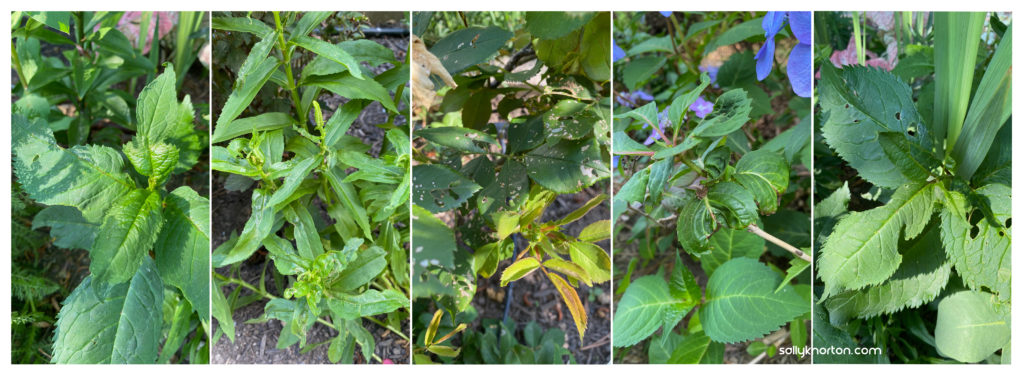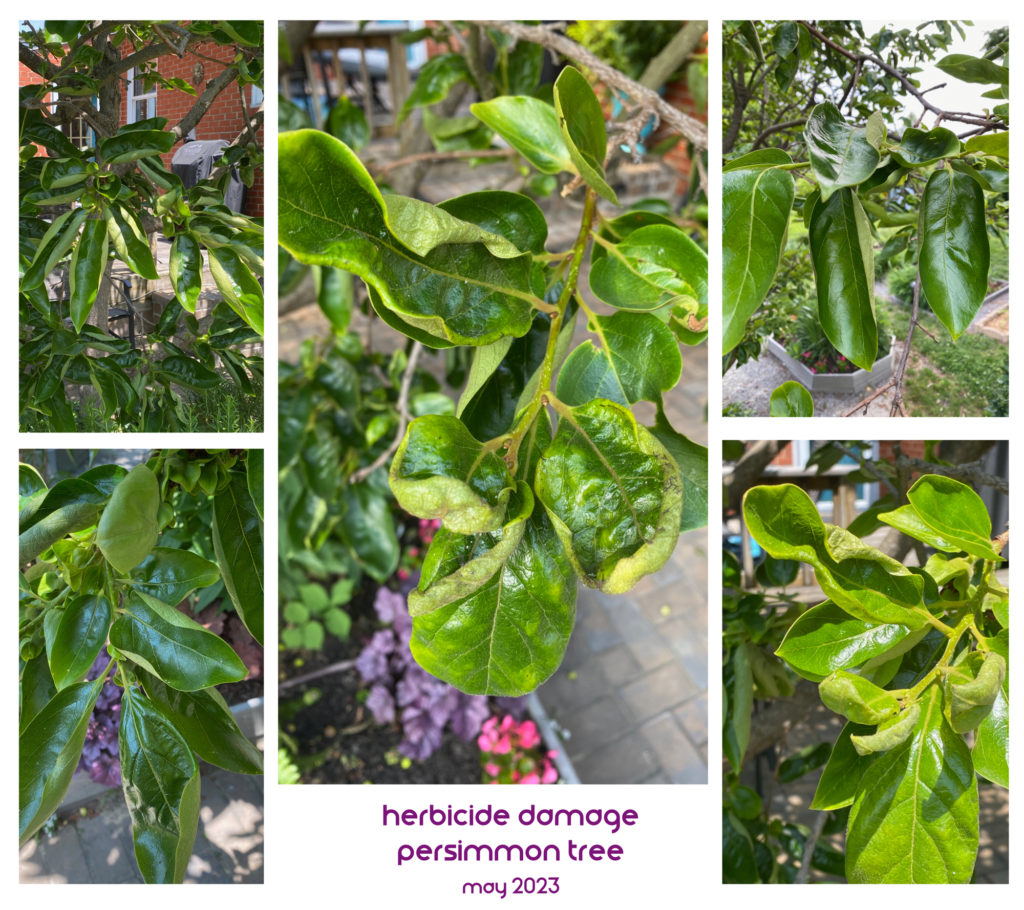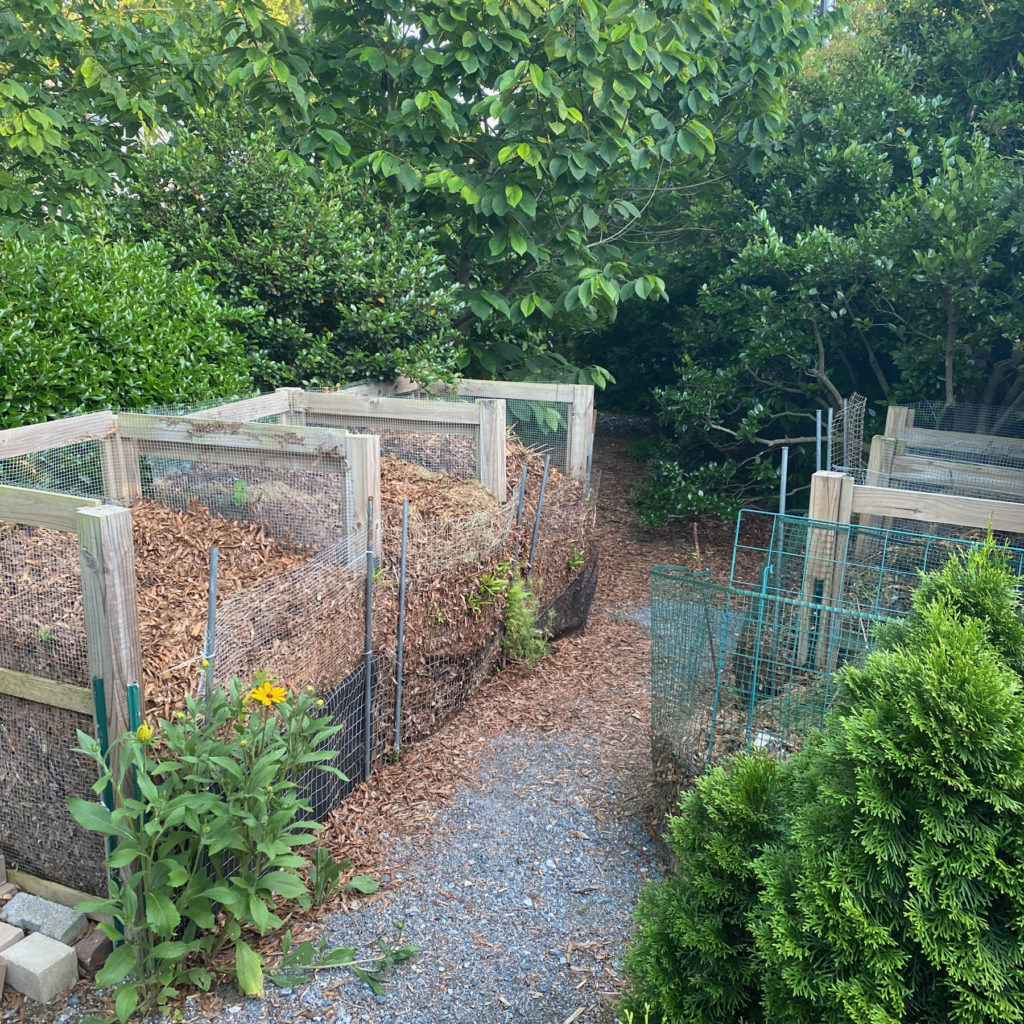Freedom from excessive toxins and proper nourishment are key to optimal health. Toxins, be they natural or synthetic, harm our health and threaten our futures. (Keep in mind that naturally occurring oxalate, heavy metals, and asbestos can create some nasty problems.) The simplest way to avoid becoming toxic is to avoid exposure in the first place.

Oxalates Make us More Susceptible to Other Toxins
Hopefully, healing from oxalate toxicity reminds us that we must also think broadly about toxins in daily life. In a way, just zeroing in on one toxin (be it oxalates, heavy metals, mycotoxins, or some other noteworthy poison) misses the point: our cells need to be generally free to do their jobs.
An oxalate-toxic diet uses up glutathione in the body and can become a huge source of the antioxidant-deficient (toxic) state called “oxidative stress.” In test animals with calcium-oxalate crystalluria, severe tissue damage at the mitochondrial level occurs. That means the stressed cells damaged by oxalate have lower energy levels and poor function.
In today’s toxic world with diets built on industrial foods, our antioxidant status is frequently deficient. Oxalate makes it worse. Lowered tissue defenses make oxalate crystal attachment and accumulation of oxalate in tissues unavoidable.
All Toxins Matter
Toxicologists warn of synergistic effects from tens of thousands of low-level chemical exposures while having a massive blind spot regarding the potentially devastating effects of oxalate from popular foods.
Toxicologists could be the ones to warn us about oxalate, but they generally don’t study nutrition nor research literature on kidney disease (where the oxalate researchers publish). And, like everyone else, they remain oblivious to the immense problem of too much oxalate in our diets. Perhaps that is because doctors and nutrition professionals ignore oxalate.
Healthwise, trying to avoid toxins without knowledge of oxalate is futile. On the other hand, knowing about oxalate does not mean that other chemicals don’t matter, nor does it give us license to dismiss or ignore other ways humans poison ourselves.
Frustrations of an Organic Gardener
Being a chemically sensitive organic gardener, I want to point out here the ubiquitous, unavoidable, and dangerous presence of weed-killing herbicides. Not only do these chemicals impact the plants they’re designed to destroy, they don’t stay where they’re applied. They pollute our air, seep into our soils, and contaminate our food and water.
My own experience with “being green” has been a struggle. I have a deep passion for gardening and have invested time and effort over many years to build an organic garden landscape. Yet, every spring, my plants and landscape are assaulted by my neighbors’ use of herbicides.
The herbicides cause visible stress to my trees and plants. The damage is most apparent on the persimmon tree just outside my office window. Under less toxic conditions a persimmon tree creates large, glossy, smooth, symmetrical, and attractive leaves. But my tree has warped, twisted, puckered, buckled, and stunted leaves. The tormented appearance comes from impaired cell activity, irregular growth, and cell death due to pesticides. The altered biology and stress of pesticide exposure also makes plants more vulnerable to predation from insects and fungal infection.
A business behind my house employs a landscaping service that dutifully uses liquid herbicides every few weeks from April through October. This chemical treatment limits their weeds but drifts into my garden where it kills some of my plants and stresses all the crippled survivors.

Hidden Dangers of Herbicides
The reality is that no one in the suburbs can truly grow organic backyard tomatoes. Herbicide drift can carry these chemicals up to 10 miles! Sprayed by many urban users and on nearby farms, pesticides threaten the purity of organic foods and make it nearly impossible to escape the contamination of the springtime air. This stuff gets everywhere. The dream of a truly organic lifestyle can seem out of reach for those of us striving for health and wellness.
Herbicides are more than just an inconvenience to those of us who care for our gardens. These chemicals are detrimental to our health. They contaminate the air, soil, and water, posing risks to humans, pets, and wildlife. And they damage the productivity of farms and threaten entire ecosystems. Despite all that, they are used casually to maintain picture-perfect lawns.
Impact of Herbicides on Human Health
The health impacts of herbicides on humans are varied and alarming. Numerous studies have documented these effects, associating herbicide exposure with a range of ailments. A comprehensive report by the International Agency for Research on Cancer, classified glyphosate, a common ingredient in many herbicides, as “probably carcinogenic to humans.” This conclusion was drawn from several studies that linked glyphosate exposure to a higher incidence of non-Hodgkin lymphoma.
Herbicides contribute to hormonal problems leading to obesity, insulin resistance, polycystic ovary syndrome (PCOS), fatigue, and pain. As endocrine disruptors, they are suspected to contribute to infertility, premature puberty, ovarian cancer, poor quality sperm and benign testicular tumors. The most vulnerable to these effects are pregnant women, infants, and children, as exposure during these critical stages of development can lead to lifelong health impacts. Science has barely scratched the surface when it comes to recognizing the effects on our lives and well-being.
My Painful Lesson in 2011
Twelve years ago, I learned my first painful lesson about herbicides in suburbia. In mid-April 2011, despite full knowledge of my organic food garden and landscape, my next-door neighbors had their yard sprayed with “Speed Zone Lawn Weed Killer” by an unlicensed pesticide operator. The herbicide over-spray contaminated our entire property (and beyond). At the time, I was oblivious to the pesticides being used around me.
When I noticed problems in my garden plants, I contacted the county. They told me to call the State Department of Agriculture and Consumer Services. The state investigators took plant tissue samples and confirmed that Speed Zone Lawn Weed Killer’s pesticide ingredients, Dicamba, Mecoprop, and 2,4-D were on our plants and property.
Dicamba is a general use herbicide rapidly absorbed by plant leaves on aerial application and is readily mobile in soils. According to EPA, the most common problem with Dicamba is over-spray by improper application, as occurred here. Mecoprop is a rapid acting herbicide often used with Dicamba.
2,4-D (2,4 Dichlorophenoxyacetic acid) is a systemic herbicide for broad leaf plants. Although 2,4-D remains in wide use in the United States, it is restricted or banned in some other countries. The notoriety of 2,4-D comes from it being a component of Agent Orange during the Vietnam War. Some formulations of 2,4-D, due to the manufacturing process, contain dioxin contaminants which are recognized as carcinogenic, immunotoxic, and endocrine disruptors. According to EPA, the risk of 2,4-D herbicides is best managed by careful application.
Speed Zone did a number on our garden. The substantial damage to the plants, shrubs, and trees was visible and dramatic. Many of the ornamental plants in the garden failed to bloom, ceased to grow, were otherwise stunted and deformed, or died. Less obvious was the lost organic state of the garden soil and the contamination of foods we were growing. The garlic, tomatoes, peppers, squash, and cucumbers that were not killed outright were unfit to consume, and unfit for producing seed for subsequent seasons. The soil required extensive remediation measures to return the property to a relatively “uncontaminated” state.

My broken organic heart hasn’t fully recovered. The inconvenience and loss of enjoyment of our land were bad enough. But the anguish over the lost garden and hard work required to find justice was immense. Our case settled out of court, so in terms of public record, nothing ever happened. Sadly, every year since, we continue to sustain garden poisoning caused by other neighbors, and repeatedly by the commercial neighbor behind us. (See the photo above of my persimmon tree’s springtime torment, just outside my window.) The business, the county, and the state have not been willing to help find a resolution. Few people anywhere are willing to admit to the destructive nature of landscape maintenance via chemicals.
Far-reaching Implications of Herbicide Use
Herbicide use creates many serious problems beyond making my garden ugly. Including:
Threat to Bio Food Web and Biodiversity: It’s easy to forget that our actions impact the world around us in ways we might not immediately see. Did you know that herbicides and other garden chemicals harm a whole spectrum of life forms, including the bacteria and fungi in our soil? These foundational organisms are critical to the health of plants needed by insects, herbivores animals, and the web of life. All are threatened when we damage the living food web in healthy soil.
Killing Soil Fertility and Food Production Capacity
Every time we spray, we kill soil organisms and disrupt the delicate web of life necessary to grow nutritious food. Soil, a precious live-giving mixture of weathered minerals, decayed organic matter, and uncountable living organisms, is the foundation of life on land. Yet, only 10% of the earth is covered with soil. And a great fraction of that is covered or displaced by pavement and buildings. The rest of the earth surface is oceans, dessert, mountains, and ice. Chemical fertilizers, tilling, and pesticides are deadly for the life in the soil.
Carbon and Herbicides: Being so rich in bacteria, living soil is the biggest carbon container on earth. When we destroy soil and plant life with chemicals, we reduce nature’s innate ability to capture and store carbon dioxide. By using herbicides, we’re directly sabotaging our efforts to combat climate change. Producing and applying herbicides contributes to greenhouse gas emissions. On the other hand, when we restore soil life with compost and organic practice, we can store massive amounts of carbon.
The Creation of Superweeds: Life has a remarkable ability to adapt to survive. Weeds are no exception. Just as bacteria can become resistant to antibiotics, weeds develop resistance to herbicides. This adaptation results in an escalating cycle of increased herbicide use and stronger, more chemical-resistant weeds. These “superweeds” are becoming a formidable issue in agriculture, undermining our food security.
Influence on Culture and Livelihoods: Chemical and machine-based industrial models of farming have destroyed rural communities whereby family farms are no longer viable. Massive, resource intensive, ecosystem-destroying monocrop operations produce a handful of commodity crops that are the source of the plant-based “staples” used in commercial foods (seed oils, grains, starches, additives, etc.). Herbicides are a fundamental element in the dystopian design of these operations. Our current industrial system not only disrupts people’s way of life and their health, but also contributes to the loss of cultural heritage, both in the first world, and everywhere around the globe.
The choice to use herbicides can have a profound impact on the world around us. By understanding and acknowledging these broader implications, we can make more informed choices and work towards a healthier, more livable future.
How to spot Herbicide Damage on plants growing in your community.
Herbicides “drift;” they volatilize and move through the air in droplets or vapor for days following application, causing injury to nearby sensitive plants that they land on. Damage from 2,4-D, dicamba, and other growth regulator herbicides is common.
To spot the effects of drift, look for leaves with deformed or strange shapes: curling cupping, or puckered, and that are smaller than normal. The plants keep growing but may be stunted. Affected plants are more susceptible to insect damage, or they may have spotted or necrotic leaves.

Minimizing Toxic Overload
As we rebuild our health with oxalate-awareness, it’s vital to understand the interconnectedness of our diet, lifestyle, and environment. Just as we work to reduce the oxalate content in our diet, we should also stay mindful of our exposure to other environmental toxins.
Yes, keep your home as free of chemicals as you can. Eliminate toxic air fresheners, scented laundry and other cleaning products. Simplify your personal care products. And whenever possible, buy foods grown without pesticides (organic).
A healthy lifestyle includes taking notice of these dangerous chemicals and their presence in our lives and communities. Start by learning to see the damage in the plants around us (look for and take photos of herbicide damage). Share information and concern with neighbors. Make lawmakers and others in community leadership positions aware. Be willing to speak out about the perils of herbicides and the importance of limiting their use.
If you maintain a yard, here are some practical steps to make your garden more organic and toxin-free:
- Stop using synthetic fertilizers and herbicides. Here’s a link for alternatives to glyphosate (Roundup): https://www.consumernotice.org/environmental/pesticides/roundup/alternatives/
- Use vinegar as a natural herbicide: White vinegar (straight or diluted with water) directly applied to weeds, can effectively control weeds without harming desirable plants or the environment. directly applied to weeds, can effectively kill them without harming your desirable plants or the environment. I suggest using a plastic squeeze bottle, such as a former ketchup bottle.
- Grow pollinator-friendly plants to encourage beneficial insects: Native flowers and herbs attract insects like ladybugs and lacewings that eat problematic pests.
- Create a compost pile and use organic mulch: Turn your autumn leaves, grass clippings, and other yard waste into a critical fertilizer for your garden. Find a spot to set up a leaf bin or two. You can choose a method of home composting that works best for you.
- We have 5-6 bins to hold the massive harvest of leaves from our two giant willow oak trees—see photo. In the photo the piles have shrunk to less than 2/3 their original size in 5 months. We built each bit atop a pallet to keep the tree roots out the heaps. The sides are hardware cloth with a simple frame anchored to the ground with metal fence posts. You can use reclaimed materials for much of the construction. A cylindrical one is easy to build using two old bike wheel rims and hardware cloth.
- Compost is the critical tool to revive “dead dirt.” Living soil can be restored with the technologies of compost, organic mulch (leaves, grass clippings, wood chips), and compost tea. Adding compost to the surface of the soil around shrubs and garden beds will inoculate the soil with organisms that spread life. Such “top dressing” is important to support a living ecosystem that keeps soil teeming with life (bacteria, fungi, protozoa, nematodes, earthworms, and arthropods such as millipedes). For more great information on compost, I like Mike McGrath’s Book of Compost, check it out from your local library or buy it second-hand.

Two tips for an Organic Lawn:
- Treat your lawn with compost at least every other year, or more often if needed. (Look for compost companies that deliver, or even apply compost to lawns.)
- Leave grass somewhat high, (3 – 4-inches; 8-10 centimeters) to shade out the weeds. Mowing to shorter heights just encourages weeds, stresses the grass, and makes it grow faster and become weaker. Ironically this practice makes for mowing less frequently, not more.
Tip for Vegetable and Flower Gardeners
- Practice crop rotation and use winter cover crops: Rotating crops (planting different types each season) can help prevent diseases and pests while maintaining soil health. Even if you’re only planting annual flowers, you can reduce soil diseases if you plant different varieties one year to the next.
Spreading Awareness and Protecting Our Communities
Managing our own gardens with non-toxic means is a great start. But as my own garden story illustrates, most of the environmental chemicals we encounter are not under our personal control as individuals. Still, we can advocate for change in our communities.
Share information about the dangers of herbicides and the importance of organic gardening with your neighbors. If you rent, talk to your landlord.
Ask your neighbors to use only granular type weed killers (if they must use chemicals), not liquid herbicides, and ask them to inform you before they apply any liquid chemicals so you can monitor the circumstances, protect yourself and your pets, potentially intervene if wind is strong, and monitor your own plants for drift damage.
Use social media and local online forums to disseminate research and articles that highlight the risks associated with herbicide use. The more information we share, the more empowered our communities become to make informed decisions about lawn and garden care, and to influence use of toxins and industrial modes of food production.
Start dialogues at community meetings and with local representatives about the dangers of herbicide use and the need for stricter regulations. Learn how things get done in your community and bring attention to the need to restrict or eliminate public-funded use of herbicides and pesticides. Ask your state reps and agencies to make the required training of landscapers more rigorous, to limit the sales and use of these chemicals, and to enforce the regulations.
Bring young people and friends to participate in or organize local events such as non-chemical maintenance of parks and streets, or even yard assistance for elderly homeowners.
Raise awareness about the importance of reducing environmental toxins whenever you can. If we are going to create a safer and healthier environment for all, we start with awareness of the hazards and safer practices.
Embracing a Toxic-Free Environment
Living to maximize your vitality is multifaceted. Basic awareness of toxins floating in on the wind currents starts with inspecting the roses. I hope you’ve learned how to see plants as communicating with us about the pervasive problem of escaped herbicides in our environment.
Maybe you agree that access to, and participation in, a healthy ecosystem is essentially a basic human right that is critical for health. Today, we are all deprived of this. Let’s work together to raise awareness of the harms of toxic chemicals, promote less toxic living, and create a dialog toward building a healthier, more livable world.